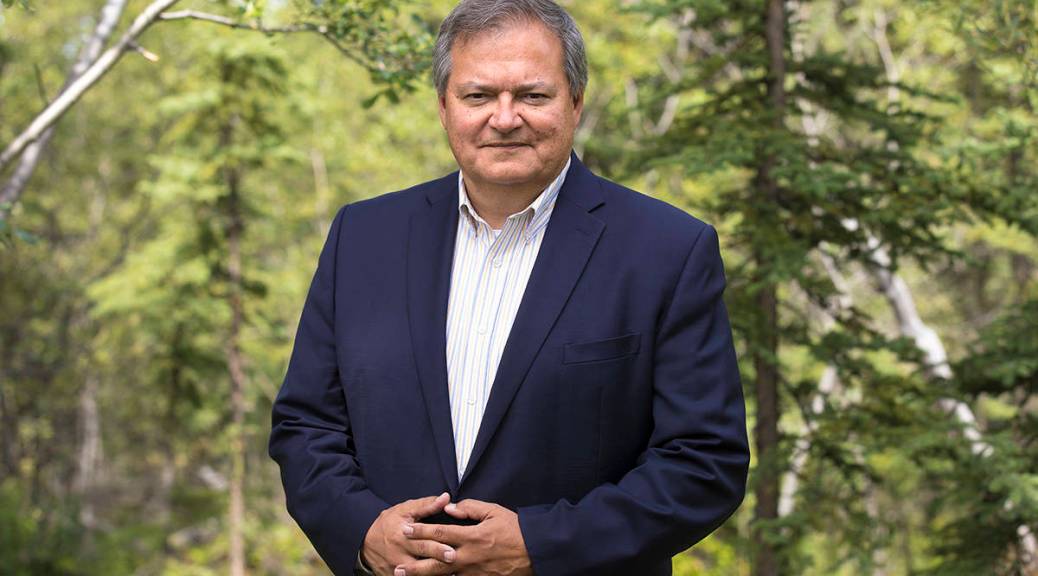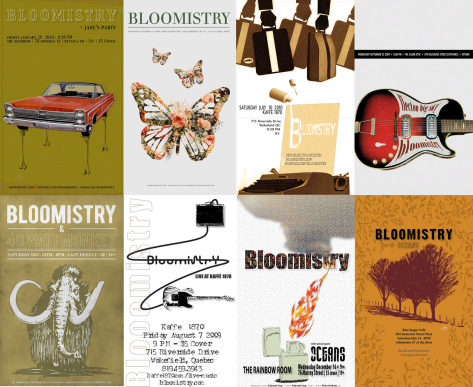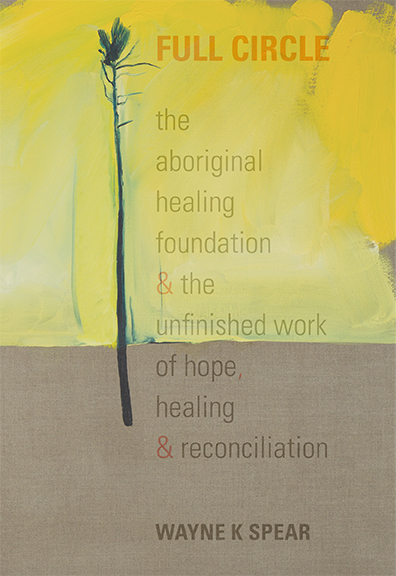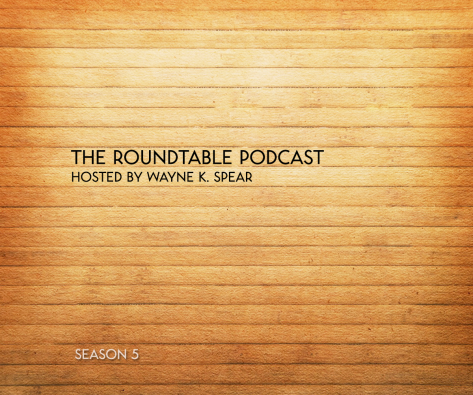
Tag Archives: Ottawa
Looking back on this week’s Truth and Reconciliation final event

It’s a sunny Tuesday in Ottawa, and I’m having shawarma with my son on Bank Street. We are the only customers this late in the afternoon. On the TV there’s a live broadcast from the nearby Delta Hotel, where I too had been only minutes ago. Earlier in the day, the Truth and Reconciliation Commission of Canada released its report “What We Have Learned: Principles of Truth and Reconciliation.” As I eat my shawarma I try to imagine all the restaurants, all the bars and lobbies and lounges across Canada, and elsewhere, that this broadcast is reaching.
It’s difficult to summarize how I feel.
It’s earlier in the week and I am tucked into a corner of the second-floor balcony, looking into the Delta foyer. There are people everywhere. It smells of burning sage and the grilled chicken from the restaurant below. Voices combine to an indecipherable roar that resembles crashing water. The noise is punctuated by the sounds of forks surrendered to exhausted plates, of drumming, of abrupt laughter. A drum group whose members include Wab Kinew plays a song, and right above the drummers, on the same second-floor balcony to which I’ve escaped, the Primate of the Anglican Church of Canada taps his foot.
My senses are numbed. It’s relieving, and also a bit strange, to realize that I can walk two blocks in any direction and find myself in the sleepy day-to-day of downtown Ottawa.
I see many familiar faces. I’ve been at this long enough now that I catch myself reminiscing about the old days. The people I talk to agree: it was different then.
Twenty years ago the pain of Indian residential schools was raw. It tore through the rooms where we gathered. Anger and hurt so fresh, so intense, it was frightening to behold. I’ve lost count of the gatherings of residential school survivors I’ve attended—some well over a decade before there was a TRC—but the emotions are something you can never forget. I knew more than a few senior bureaucrats who didn’t mind admitting they were terrified, half-convinced they wouldn’t get out unscathed.
All these years later, there are survivors of terrible abuse who are telling their story for the first time. The familiar anger, and the hurt, remain. But the mood at this week’s final event is not what is used to be at gatherings of this sort. We aboriginal people are stronger than we were. We are no longer so filled with shame and self-loathing that we are unable to talk about what happened in those institutions. Survivors know that it wasn’t their fault, and one by one they are letting go of the destructive emotions which have held them back. We are looking to the future, and we’re in no mood to settle for anything less than what we consider good and just.
Healing and reconciliation, as Justice Murray Sinclair notes, are personal matters. It’s up to individual survivors to assess progress. Everyone wants to believe, but when it comes to the relationship between aboriginal people and the Canadian government we are all agnostic. For a century now native people have complained of politicians who deal only in fine-sounding words. Although the mood of the week is positive, I note the standing ovations given to people who, like Ellen Gabriel, have had their goodwill and patience depleted—not only by inaction but by government actions which are seen to contradict the spirit of reconciliation.
Here, at the Truth and Reconciliation Commission’s final event, we are reliving the June 2008 apology. On that day the painful experiences of aboriginal people were recognized and validated by every political party, including the Prime Minister of Canada, Stephen Harper. No longer could anyone credibly argue (as I remember people did) that there was nothing to apologize for, beyond perhaps the unfortunate zeal or wickedness of “a few bad apples.” Now, as in 2008, we were receiving official acknowledgement of the pain and injustices inflicted on us.
It took decades to get here. Years of survivors telling their stories, year after year pushing for recognition, apology and restitution. It’s been over 20 years since Phil Fontaine saw his story of residential school abuse on the front page of the Globe and Mail. (He later told me he didn’t expect this airport conversation to end up in print.) In the years following this revelation, many hundreds of survivors organized themselves.
A remarkable coalition formed around the cause of truth-telling, healing and reconciliation. Survivors, churches, activists, artists, politicians, elders, front-line workers, citizens, and other joined for a common cause. Survivors and their supporters published books and commissioned reports. They created support groups and lobbied for an apology. They launched what would become Canada’s largest-ever class action lawsuit, the Indian Residential School Settlement Agreement.
Out of this exhausting and relentless effort came the Truth and Reconciliation Commission. To understand the feelings in that room, as the TRC summarized its findings, you have to understand the amount of time and work that went into making that day a reality. In terms of sheer human will and commitment, the determination to have the history of Indian residential schools properly recognized rivals anything else this country can put up—including the building of a transcontinental railroad, or the establishment of a nation from sea to sea.
It’s done now. There’s no turning back.
My Truth, My Reconciliation

Will Canadians learn anything of useful value from the Truth and Reconciliation Commission of Canada? Will they even be interested in doing so?
These and other questions are on my mind as I prepare for the final closing events of the TRC, from May 31 to June 3. I don’t expect to find the answers to my questions in Ottawa. It will take years to assess the efficacy of this commission. And ordinary Canadians, not the Establishment, will be the ones who decide. Or perhaps not.
I’ve been asking questions about the Indian residential schools, and looking for answers, for a quarter century now.
In the early years of the last century, my grandfather Gowandehsonh was in the Anglican-run Mohawk Institute (the longest-running Indian residential School, better known today as the Mush Hole). He rarely spoke of it, mentioning as we drove by the building that he used to dig in the moonlight for raw potatoes to eat. This information—delivered casually and in passing—came without context or further explanation, and young as I was I could do nothing but sit in confused silence.
In the 1990s I began studying the residential schools for my doctoral thesis. Around the time former AFN National Chief Phil Fontaine went public with his story of residential school abuses, and others soon came forward. In 1992 I had my first candid conversation with a former student, or “inmate” as Indian Affairs had once termed them, about what really happened.
Since then I’ve interviewed hundreds of people and written several books, including Full Circle: the Aboriginal Healing Foundation & the unfinished work of hope, healing & reconciliation (get your free ebook version here) and Residential Schools: with the words and images of survivors.
Bob Watts, who played an instrumental role in setting up the Truth and Reconciliation Commission, said something to me I’ll never forget. It’s quoted in my book Full Circle:
I don’t think of reconciliation as the Prime Minister of Canada and the National Chief of the Assembly of First Nations having some sort of hug-fest on Parliament Hill, and then everything will be okay. I think about my friend Ken, who was in his sixties when he told his daughter for the first time that he loved her. He didn’t know that was part of the deal being a parent, because he never got that himself as a kid. To me that’s reconciliation. I think there’s going to be hundreds and thousands and maybe tens of thousands of little wee tiny reconciliations. But all those have a force.
I’ve interviewed former students, church leaders, therapists, lawyers, journalists and government officials from the front-lines right up to the Prime Minister. I’ve found that everyone has their own ideas about what reconciliation is and how we get there. My book ended up being a collection of personal truths, jostling against and conflicting with one another. I expect the TRC’s final report to be the same, offering to Canadians myriad reflections on the truth of experience rather than the objective Truth of a judicial inquiry. I also think my friend Bob is closest to being right about the nature of reconciliation.
I was in the House of Commons when the Prime Minister of Canada apologized for the government’s role in residential schools. It was a powerful speech, and I was frightened at how unprepared I’d been for my nearly-overwhelming emotional reaction. But even then I knew that, on their own speeches and slogans and photo-ops are not going to get us very far. This isn’t about the National Chief nor the Prime Minister, although they doubtless have a role to play. The thousands of unseen, unreported, uncelebrated gestures of ordinary folks are what will make the difference—if there’s going to be a difference at all.
I’m going to Ottawa in search of this.
You can join me this weekend, wherever you are, by participating in the Legacy of Hope Foundation’s #hopeis social media campaign.
Bloomistry Live at Raw Sugar Cafe | 10.10.2009

Bloomistry live at the Raw Sugar Cafe, Ottawa, Canada. October 10, 2009
Audience recording. Dmitri Koev, bass; Simon Meilleur, drums; Terry Calder, guitar, b. vocal; Wayne K. Spear, guitar, vocal.

CBC radio’s Amanda Putz had just done a feature on our new album, To Be, so there was a bit of buzz in the air when we took to the stage in October of 2009. We were doing shows every week somewhere in town, which in retrospect was pushing things a bit into over-exposure.
This was a fun show. The audience was pretty low-key and sedate, but it was a good crowd and we were playing in a cafe, after all. This recording was made from the audience, and the quality is not great. Four of the songs we played were only partially recorded, and are not included. Yulia Teryaeva captured the evening in photos with her keen eye, as she did on many other occasions. I also asked a photographer named Jennifer Lapierre to come out to the show, which she did. It’s a funky and intimate venue, and we were really stoked to play this show. A lot of bands love Raw Sugar Cafe.
Set
1. The Wars
2. Trigger of Your Soul
3. A Crack in My Cup
4. Bitter Sense of Melody
5. Ragged Doll
6. River Wide Road
7. Late Bloom
8. Hook and Eye
9. I Guess I’ll Need A Miracle
10. North of Wasomee
11. Four Leaf Clover
Bloomistry Live at Kaffé | 23.10.2009

Bloomistry live at Kaffé 1870, Wakefield, Quebec. October 23, 2009
Audience recording. Dmitri Koev, bass; Simon Meilleur, drums; Terry Calder, guitar, b. vocal; Wayne K. Spear, guitar, vocal.
We did a bunch of shows at Kaffé 1870, a bar in the postcard-perfect, riverside village of Wakefield, Quebec, run by members of The Fiftymen. It was a great venue, and I remembered this being one of those beautiful, clear fall nights when the autumn leaves are at their peak and the air is crisp in a good way that makes you feel alive. But then I listened to the recording this week for the very first time, and in one of the songs I mention it’s raining outside! So either I was remembering the show I did a week earlier with Chris Page, or my brain is just making this all up.
The crowd that night was rowdy and ready. We were never a dance band, and I wasn’t prepared for a crowded dance floor—but when it happened, I loved it. My friend Flecton Big Sky shared the bill, joined by his band The Dreamcatchers, featuring Scott Terry on guitar and Tom Werbowetski on drums. Scott was my first drummer, and you’ll hear him heckling in good fun. As for The Dreamcatchers, I think this may have been the last time they performed together, but like my recollection of the weather I could be wrong.
We did a photo shoot with Yulia Teryaeva before this show in Mackenzie King Park and spent the day in and around the village. I don’t remember when we took the stage, but it was a long night. I went home exhausted but happy.
This recording is rough, but it gives you an idea of the night. The set list doesn’t exactly match the recording, but it wasn’t unusual for us to change things up on the fly. Or maybe I just didn’t read the set list properly. We played three songs that we didn’t often perform—What Might Have Been, The Wars, and Fountain of Light. I’ve always thought Fountain of Light was among my better songs, maybe because of how it happened. I was struggling with something in the studio, so I just took a break and went off to the side with my guitar to decompress. And in one uninterrupted go, out came this song, exactly like it is on the record. I recorded it right then and there. Creepy. That had never happened to me before, and it’s never happened to me since.
Set List


Bloomistry Live at Westfest | 12.06.2010

Bloomistry live at Westfest, Ottawa, Canada. June 12, 2010
Soundboard recording, MP3 (320 kbps). Dmitri Koev, bass; Simon Meilleur, drums; Terry Calder, guitar, b. vocal; Wayne K. Spear, guitar, vocal.
Westfest is a yearly Ottawa music festival started by Elaina Martin. In 2010, I had the privilege of being invited by Elaina to play on the Saturday night slot, with Sloan headlining. The weather was perfect and the sound was great, although with this recording (taken from the soundboard) the instruments are a bit unbalanced and you can’t hear the audience. We didn’t get a sound check, so on the first song the engineer is figuring out the levels. Hang in, it gets better. For what it’s worth, on stage the sound was a great, big stadium sound.
By this point To Be had been out for around 8 months and we had a well-established set list drawn from 6 albums and a bunch of other, unreleased material. We rotated songs in and out to keep it fresh. I think we had about 30 songs in total that were stage-ready, plus a few rarities that we threw in on special nights like this. For Westfest we played Hook & Eye, a song we hardly ever played. I think we may have even rehearsed it specifically for this show.
It was a great day, and one of the Bloomistry highlights of 2010. Enjoy.
Playlist
Introduction: Amanda Putz, CBC Bandwidth
1. Trigger of Your Soul
2. As Far As Wheels Go
3. Wrecking Ball
4. Late Bloom
5. The All About A Girl
6. Four Leaf Clover
7. Feet On The Mountain
8. Hook & Eye
9. Come Down Easy
10. Unlucky at Luck

Bloomistry Live at Zaphod | 03.15.2010

Bloomistry live at Zaphod, Ottawa, Canada. March 15, 2010
Soundboard recording, MP3 (320 kbps). Dmitri Koev, bass; Simon Meilleur, drums; Terry Calder, guitar, b. vocal; Wayne K. Spear, guitar, vocal.
Playlist
1. Trigger of Your Soul
2. As Far As Wheels Go
3. Wrecking Ball
4. Wine and Women
5. The All About A Girl
6. Feet On The Mountain
7. Interstate
8. Late Bloom
9. Come Down Easy
10. Unlucky at Luck

Show notes. Bloomistry played Zaphod numerous times over the years, often on the “Showcase Monday” evenings. There was a band legend that Zaphod carried a curse: it was several Zaphod shows before the whole band was able to be on-stage together for a show. On previous occasions, illness and accidents struck a band member. For one of the Zaphod shows, Dmitri was ill. Simon cut the end off a finger and was unable to play the drums for another (Terry played the drums for that show). So by the time the four band members took the stage for the first time, on March 15, 2010, there had already been several Zaphod Bloomistry shows, including a solo show I played to open for a promising young band called James and Blackburn (I think). Wonder where they are now? The show was captured by Tom Stewart, a great guy and a great sound engineer. This show features two tracks from the new (at that time) record To Be, “Feet On The Mountain” and “Wine and Women” (a song whose lyrics are taken from John Donne’s 17th-century poem “Song: Go and catch a falling star).” This evening was the first and possibly only public performance of the latter. I was in a great mood that night and remember having a blast. Live music is the best drug.
Full Circle: download and read the story here
Romeo Dallaire and the 80/20 Rule
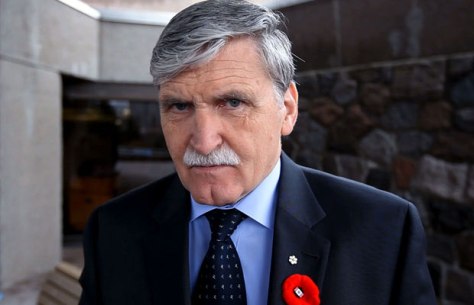
THE DATE WAS Thursday February 15, 2007, and I was on my way to a parliamentary Senate breakfast on Ottawa’s Wellington Street. With me was the former long-time CBC national reporter, Whit Fraser, a man who is never lacking for a quip of the moment. As I opened the door to the Senate building, keen to escape Ottawa’s notorious winds, he remarked: “eighty percent of these people are useless. But the other twenty make up for it.”
What Did the Prime Minister Really Know About Bruce Carson’s Past?

MEET BRUCE CARSON, as early as the 1970s a compulsive thief and fraudster and, in more recent decades, a fixture of Parliament Hill. He is the man who today begs the necessary question, Who exactly has failed to do their job?
Rock On, Rock Off: Reflections of an Ageing Musician
TEN YEARS AGO, in 2003, an acquaintance of mine named Elaina Martin created Westfest. This free-of-charge Ottawa street music festival first took place on June 12, 2004, the year that Jane Sibbery was the headlining act. Elaina was then, as she would remain, what is generally termed a force. Every June since, with the help of local businesses and community volunteers, she has steered the festival to harbour. One of the highlights of my time in Ottawa was performing at Westfest 2010, on a bill with Sloan, a memory which came to the surface as the festival once again took to the stage on Thursday June 6, 2013.
Rob Ford is an Effect, Not a Cause, and We’ll Survive Him

AS I WRITE this it is impossible to say whether the drama surrounding Toronto Mayor Rob Ford’s alleged new high constitutes an actual new low, but drama does seem to be the word of the moment. Exactly one year ago I moved to this city, and in the time since I have witnessed the restless strut and fret of local municipal politics, the principal player of the stage forever availing himself to fresh tales full of sound and fury.
Abortion, Augie and the March for Life

SUBMITTING MYSELF TO the Ottawa weather, which today possessed all the charm of wet underpants, I lingered while the wind carried my way the Parliament Hill speeches of the March for Life assembly. In the middle of one characteristically sonorous appeal, I found myself thinking about a passage from Saul Bellow’s The Adventures of Augie March:
The Once and Future Liberal Party of Canada

A FEW DAYS to the weekend’s Liberal policy convention, I had a conversation with the former deputy prime minister of Canada at his Ottawa home. Most of it a trip down memory lane (Herb Gray, now 80, holds the record for longest-serving Canadian MP and has a long lane indeed), we covered topics ranging from Indian residential schools to the Polish city of Lublin, only at the end turning our attention to the future of the Liberal party of Canada.
Living in the Age of The Endless War
ON A WALL at the National Capital’s War Monument are inscribed these words, past which I walk each day and derived from the ninth book of Virgil’s Aeneid: “nulla dies umquam memori vos eximet aevo.” Here I shall provide some context, deferring to Robert Fitzgerald’s 1983 translation for Random House:
Fortunate, both! If in the least my songs
Avail, no future day will ever take you
Out of the record of remembering Time,
While children of Aeneas make their home
Around the Capitol’s unshaken rock,
And still the Roman Father governs all.

